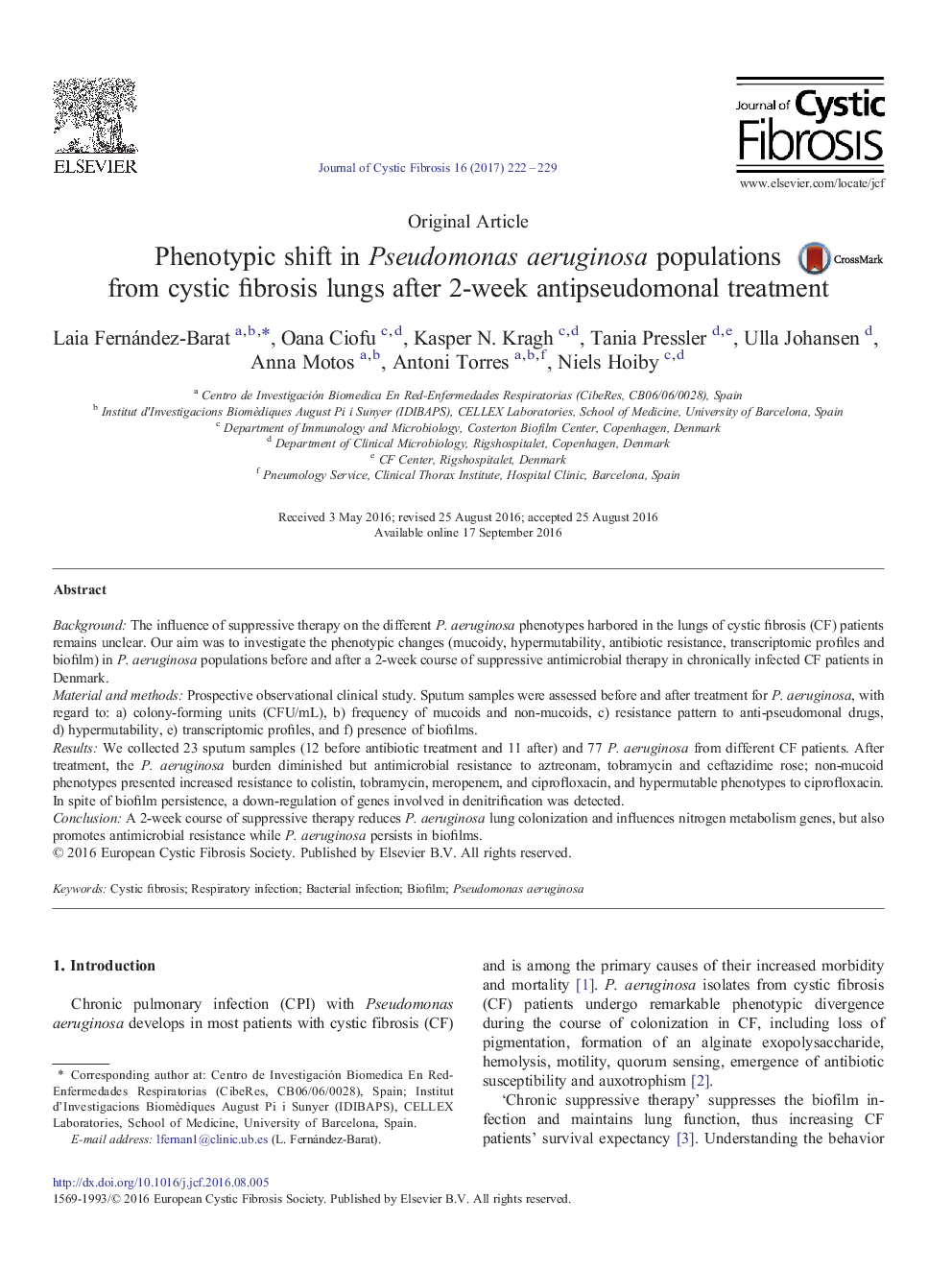| Article ID | Journal | Published Year | Pages | File Type |
|---|---|---|---|---|
| 5724631 | Journal of Cystic Fibrosis | 2017 | 8 Pages |
BackgroundThe influence of suppressive therapy on the different P. aeruginosa phenotypes harbored in the lungs of cystic fibrosis (CF) patients remains unclear. Our aim was to investigate the phenotypic changes (mucoidy, hypermutability, antibiotic resistance, transcriptomic profiles and biofilm) in P. aeruginosa populations before and after a 2-week course of suppressive antimicrobial therapy in chronically infected CF patients in Denmark.Material and methodsProspective observational clinical study. Sputum samples were assessed before and after treatment for P. aeruginosa, with regard to: a) colony-forming units (CFU/mL), b) frequency of mucoids and non-mucoids, c) resistance pattern to anti-pseudomonal drugs, d) hypermutability, e) transcriptomic profiles, and f) presence of biofilms.ResultsWe collected 23 sputum samples (12 before antibiotic treatment and 11 after) and 77 P. aeruginosa from different CF patients. After treatment, the P. aeruginosa burden diminished but antimicrobial resistance to aztreonam, tobramycin and ceftazidime rose; non-mucoid phenotypes presented increased resistance to colistin, tobramycin, meropenem, and ciprofloxacin, and hypermutable phenotypes to ciprofloxacin. In spite of biofilm persistence, a down-regulation of genes involved in denitrification was detected.ConclusionA 2-week course of suppressive therapy reduces P. aeruginosa lung colonization and influences nitrogen metabolism genes, but also promotes antimicrobial resistance while P. aeruginosa persists in biofilms.
